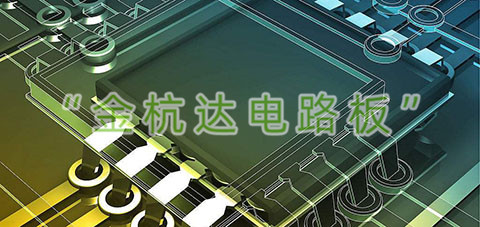As an important electronic connector, PCB is used in almost all electronic products and is regarded as the "mother of electronic system products". Its technological changes and market trends have become the focus of many industries.
At present, there are two obvious trends in electronic products, one is light and short, and the other is high speed and high frequency. As a result, downstream PCBs are moving toward high density, high integration, packaging, fineness and multi-layer development, and the demand for high-rise boards and HDI is growing.
The high-level board has short wiring length, low circuit impedance, high-frequency and high-speed operation, stable performance, and can undertake more complicated functions. The development of electronic technology to high speed, high frequency, multi-function, large capacity is an inevitable trend. In particular, the deep application of large-scale integrated circuits will further promote the development of PCBs to high precision and high levels.
Currently, PCBs below 8 layers are mainly used in household appliances, PCs, desktops and other electronic products, while high-performance multi-servers, aerospace and other high-end applications require more than 10 PCB layers. Take the server as an example. The PCB boards on single and double-layer servers are generally between 4 and 8 layers, while the high-end server boards such as 4 and 8 need more than 16 layers, while the backplane needs more than 20 layers.
HDI wiring density is superior to ordinary multi-layer boards and has become the mainstream choice for smartphone motherboards. The capabilities of smartphones are becoming more and more complex, and their size is getting thinner and lighter. The space left for the motherboard is getting smaller and smaller. A limited motherboard needs to carry more components. Ordinary multi-layer boards are difficult to meet the demand.
The high-density interconnect circuit board (HDI) adopts a stacking method, and the ordinary multi-layer board is used as a core board, a drilling hole, and a metallization process in the hole to realize a connection function between the circuit boards. Compared with ordinary multi-layer boards with only through holes, HDI precisely sets blind holes and buried holes, reduces the number of through holes, saves PCB wiring area, and greatly increases component density, so the replacement of multi-layer boards in smartphones has been rapid. carry out.
The technical differences in HDI are reflected in the order in which the layers are added. The more layers you add, the more technically difficult it is. HDI can be divided into first-order HDI, second-order HDI and high-order HDI according to the order. The number of HDI layers is expressed as C + N + C. where N is the number of common core layers and C is the order in which HDI is added. High-order HDI wiring density is high, but at the same time there are multiple presses, there are technical problems such as alignment, drilling and copper plating, which have high requirements on the manufacturer's process flow and process capability.
In recent years, the most popular HDI in high-end smartphones is HDI, which requires blind hole connections between any adjacent layers. It saves nearly half the volume on a regular HDI basis, freeing up space to accommodate batteries and other components.
Any HDI layer requires advanced technology such as laser drilling and plating plugs. It is an HDI type with the most difficult production and highest product added value, which best reflects the technical level of HDI. At present, due to strong technical and financial obstacles, production capacity is mainly concentrated in factories in Japan, Korea, Taiwan and Austria AT&S.
Dual-wheel drive of ADAS and new energy vehicles, the trend of automotive electronics growth is clear
Intelligentization and electrification are two important development directions of the automotive industry. ADAS (Advanced Driver Assistance System), as a transition before full smart driving, has become a new strategic high ground for major automakers and cross-border Internet giants to compete for layout. The electronic equipment involved covers almost all driving and safety related systems of the entire vehicle. With the rapid spread of ADAS, the level of automotive electronics will be comprehensively improved.
New energy vehicles represent the direction of automotive electrification. They require a higher degree of electronics than traditional cars. The cost of electronic equipment for traditional high-end cars is about 25%, while the cost for new energy vehicles is 45%-65%. The unique power control system (BMS, VCU and MCU) makes the PCB consumption of the whole vehicle larger than the PCB consumption of the traditional car and the average PCB consumption of the three power control systems. About 3-5 square meters, the vehicle PCB consumption is between 5-8 square meters, worth thousands of dollars.
With the rapid growth of ADAS and new energy vehicles, the automotive electronics market has maintained an annual growth rate of more than 15% in recent years. Accordingly, the automotive PCB market continues to rise. According to Prismark's forecast, the output value of automotive PCBs in 2018 will exceed $4 billion. The growth trend is very obvious, which will inject new impetus into the PCB industry. The automotive electronics supply chain is relatively closed, and the product must undergo a series of verification tests with a longer certification period. Once certified, the manufacturer will not easily change, the supplier will be able to obtain long-term stable orders, and the profit margin is relatively high.




 CASE
MORE >>
CASE
MORE >>
 Hot News
MORE >>
Hot News
MORE >>